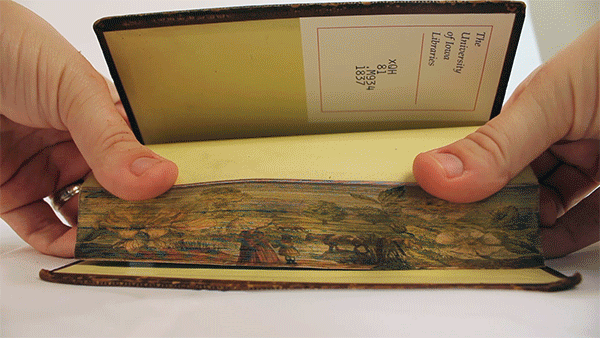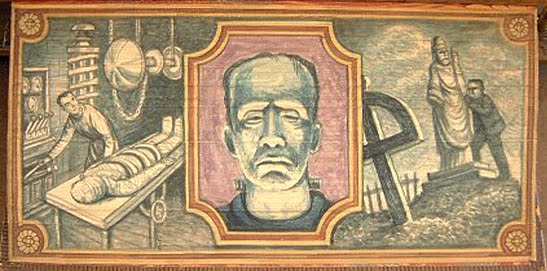SOCIAL MEDIA MARKETING; `SHOW ME THE MONEY’
No matter how much of a `feel good’ factor any business has about social media, in the end, hard-headed marketing managers only really ask one question; `How can we make money from using Facebook, Twitter, LinkedIn and all the rest of these time-consuming networks?’
The answer lies in identifying particular `tribes’ of users who are potentially your customers, your brand champions, your harshest critics when things go wrong, and born communicators – yes, some people are going to do your marketing for you. How cheap is that?
THE FIRST FACEBOOK UPDATE WAS A CAVE PAINTING
As the well known Twitterer @lesanto noted recently, Facebook 40,000 years ago was a cave painting. The update was `We hunted and killed today, it was good.’
This highlights what Robin Wight of the Engine Group spoke about at Like Minds in Exeter 2010. Human beings evolved in tribes of around 150-180 people. Our brains cannot truly `know’ more people than this, plus the number gives us a range of skills which helps group survival. So human communication is irrevocably tied to our evolution. That means Facebook, Twitter, LinkedIn and every other social network is underpinned by this same DNA-mapped reality.
Those who think they have 2000 `friends’ on Facebook are wrong. You don’t know these people. Those who simply broadcast on Twitter, without using Retweets, hash tags or @ replies to have a conversation, are on an ego trip. That isn’t social, it isn’t a conversation.
Any business can head down a digital one way street by simply broadcasting messages, but in the long run, they risk hitting a dead end in marketing terms. You have to listen.
CASE STUDIES; SEO IS CHAPTER ONE, SOCIAL MEDIA IS THE BOOK
I chose two small-medium sized companies as case studies; Frution Broadcast based in Manchester and London, plus MCi Tours, based in Altrincham to test the knowledge acquired on this course.
Fruition’s search ranking is low ( see more background at my Posterous blog ) and the site is heavy with slick flash player media. But the company doesn’t really want public visitors, they want relatively few music industry players to visit the site, be impressed, then hire them. But the SEO site audit did highlight one benefit.
One thing we all know is that people in the UK are looking for jobs right now. I found `event planning jobs’ were the top rising search UK term, up 190% in the last year. `Event co-ordinator’ was up 50%.
I refined it geographically and seasonally in Google trends;
Searches in England showed a spike in August 2010 and London, then Manchester, were top cities last summer.
So Fruition could place a house ad on their site in August, maybe blog and Twitter it too, plus run a PPC ad in the Manchester area during August, leading to a specific job application landing page.
The response could be huge, if so, people could be held on file by Fruition – a talent pool basically, full-time or freelance. All that would save a large amount currently spent on recruitment agency fees or local media advertising. Crucially, it also saves hundreds of man-hours phoning around for staff each year at peak times.
So in terms of using SEO research, we are showing the client the money trail – recruitment gets quicker and cheaper. Result.
THINKING LIKE A CUSTOMER
MCi Tours wanted more people on their motorcycle holidays for 2011, winter is their peak booking season, kicking off with the UK motorcycle show.
Working with MCi Tours’ boss Al McFarlane, we identified three things that could be done over winter to improve things.
1. Audit and tweak the website layout and content to make it more `SEO-friendly.’
2. Try and capitalise on the link traffic that’s coming MCi Tours way. Make it relevant, as well as increase it.
3. Use social media to drive more potential motorcycle touring customers towards MCi Tours – especially those interested in Route 66 US tours, as there seems to be healthy demand at present.
SEO X-Ray revealed just one external link to the site. One of things I’ve suggested to MCi Tours is that they try to get a link from the FSA, because MCi are authorised agents for motorcycle travel and breakdown insurance. Having a link from a government site would be gold dust – we can but try.
SEM Rush found 288 searchers went to MCi Tours site looking for `Motorcycle breakdown insurance.’ Interesting, as it isn’t a core part of the business, but it shows a healthy demand in the market. The fact is many UK insurers do NOT recover your motorcycle from across the English Channel – there’s an opportunity here.
We made a tweak to the site and put `Travel Insurance’ in as a H2 sub-heading and flagged it on the home page separately. MCi Tours didn’t want to commit to a full social media campaign, building Facebook conetent and a fan base of Twitter followers, but they did send a customer database email out announcing their presence at the UK bike show and the FSA-authorised travel insurance.
The result was seven holiday bookings prior to the show, whereas the previous best was two bookings in early November.
SEO works. Good news. The better news for me is that MCi Tours have retained North Point for a six week social media campaign, with live blogging, video clips from the show, posted on a new MCi wordpress blog, also on You Tube. Plus we are building a base of Twitter and Facebook followers running up to the show which opens on the 27th November – see you all there!
THE FUTURE IS MOBILE
One of the things that emerged from TruManchester was that mobile recruitment is growing fast. According to Jobsite UK it still only accounts for around 6% of all traffic, but mobile use was up 390% from Jan 2009 – April 2010. ( source; Jobsite Whitepaper ).
What does it mean in broader terms?
Social media is time consuming, so in the near future, when perhaps 50% of mobile phone users are comfortable using Smartphone browsing, stripped down, graphics heavy interfaces will become the norm. Time spent magnifying screens to tap in passwords painfully slowly, or enter a whole stack of personal data won’t be popular. Smartphone software developers are going to have create social network tools that can be used quickly, easily and intuitively.
Humans are lazy, we like the familiar. Those who insist on bombarding their Facebook `likers’ with spam updates that don’t prompt any conversation, any meaningful interaction, will fall by the wayside. Those companies who already infest Twitter with irritating 140 character PR messages, repeated twice a day and autopost replies to followers just don’t get it. You can’t automate every conversation, people are different, even if they want the same things.
The companies that develop QR code digital `fingerprints,’ which a user can access as their default gateway to the company, a kind of Polaroid snapshot `app,’ will find more business heading their way.
Mobile apps that shortcut the time involved in searching for insurance, jobs via LinkedIn, or buying gig tickets on Facebook, will make small fortunes for those who do it right, and lose large fortunes for those who back the wrong horses. Software which tracks people’s eye/mouse movements and detects their body language via webcams has incredible potential. Where our attention goes, our money follows…
Companies who use social media stripped to its essentials, the basics of human communication will always find a market. If you sell your Facebook Farmville crops to Jamie Oliver’s restaurant and get paid in real money off vouchers, people will buy into that. It is human nature.
SMALL BUSINESS, BIG VALUES
`Brands must be useful and confer status on the user.’
Robin Wight again. It takes an adman to sum up the psychology of why we buy.
So small businesses; there are 500 million people on Facebook, find your `tribe’ within that global nation. Some 300,000 new users open a Twitter account each day, joining 105m already on the network and there are 600m Twitter searches by trend, name or topic each day. Mine that gold dust, it is worth digging deep for it. Social media allows you to set your own algorithms; location, interests, age, occupation, circle of friends, Facebook apps used etc. People buy from people, so show a human face to your company. Be a friend first, a salesperson second.
Do you sell to the trade only, not the public? Use LinkedIn.
Mark Williams, known as @Mr_LinkedIn on Twitter recently noted that this network has probably halved the amount of B2B PR and trade shows that anyone does in the UK. You can join relevant discussion groups and announce conferences, webinars, invite potential buyers to look at your new product video on Vimeo or You Tube. You control it, it’s your online business media – not a big publisher’s trade show or magazine.
If you want to start a conversation, that leads to conversion. Go social.
Alastair Walker
North Point






















